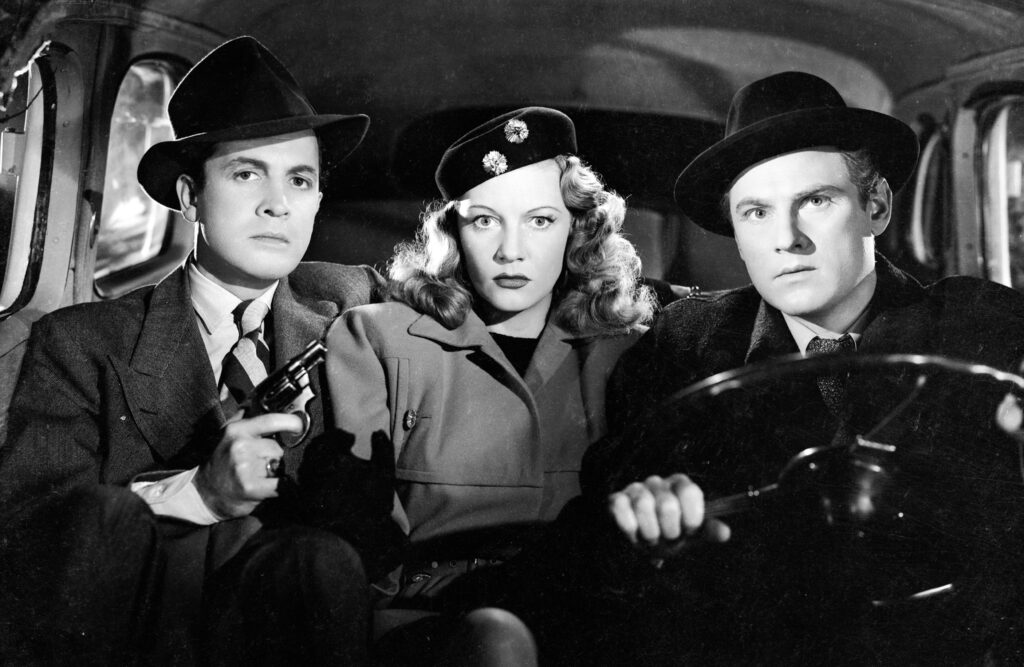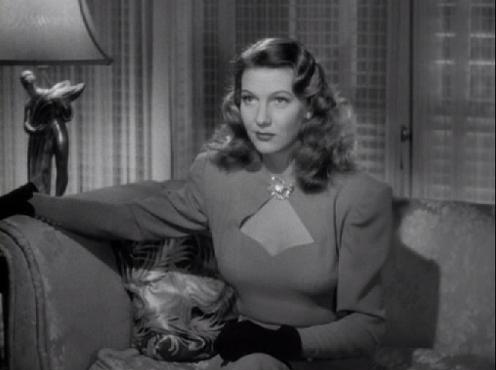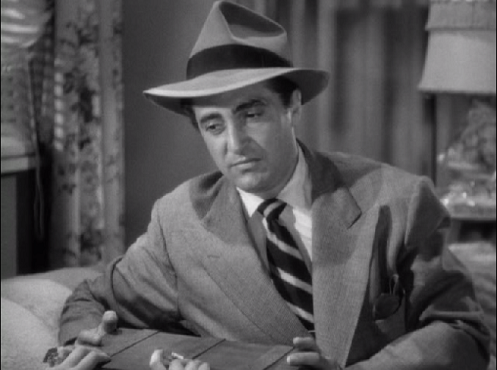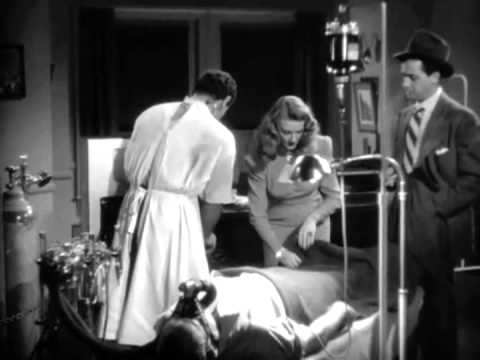
The obscure, low-budget Decoy is the first film that I’ve been unable to write about without spoilers, but you’ll still be able to appreciate it, even when you know some of what’s coming.
Decoy, from 1946, stands out from the rest of film noir (and from much of cinema) for two elements. The first is the most hysterically evil femme fatale ever. The second is that the plot pivots on a preposterous premise.
The ill-tempered Frankie Olins (Robert Armstrong) is on California’s death row because he killed a cop in a robbery. The robbery netted a huge fortune, which Frankie has hidden. Frankie refuses to disclose the location of his loot, because he wants to maximize the incentive for others to work for his release. Frankie’s girlfriend, Margot Shelby (Jean Gillie), is two-timing him with another vicious hood, Jim VIncent (Ed Norris), who is bankrolling Frankie’s legal appeals, They hope to get Frankie out of prison to recover the loot, and then steal it from him. Alas, the appeals go for naught, and Frankie is about to be executed in San Quentin’s gas chamber, taking his secret with him to the grave.
At this point, things get ridiculous. Margot and Jim revise their plan, pivoting to stealing Frankie’s body AFTER the execution and reviving him with a dose of methylene blue, an antidote for the cyanide used in the gas chamber. Now, the kernel of truth here is that methylene blue CAN be used as an antidote to cyanide poisoning in someone who is ALIVE. But, of course, methylene blue CANNOT reverse death by cyanide poisoning. But, indeed, the rest of Decoy’s plot is based on the resurrection of Frankie.
Margot and Jim manage to smuggle out Frankie’s corpse, and they force the earnest, do gooder Dr. Lloyd Craig (Herbert Rudley) to bring him back to life with methylene blue. Frankie unwisely draws a treasure map and is promptly removed from our story. Margot and Jim, with Dr. Craig driving his own car at gunpoint, head off to find and dig up the money.
At this point, Margot takes over the film. In Decoy’s final eight minutes, Margot is not only remorselessly murderous, but she’s sadistic as well. And she can even take pleasure in humiliating a man from her deathbed.

As outlandish as Margot’s behavior becomes, Jean Gillie’s performance is fully committed. Her Margot actually rejoices in her own perversity. I’m serious when I rate Gillie’s Margot as the most evil femme fatale in cinema. Even compared to the Anne Savage role in Detour, and to the parts played by Cleo Moore in the Hugo Haas movies, she is the most depraved.
Gillie was an English actress who was married to Decoy’s otherwise undistinguished director, Jack Bernhard. That marriage broke up, and she didn’t like Hollywood. After her one major Hollywood movie, The Macomber Affair, supporting Gregory Peck, Joan Bennett and Robert Preston, she returned to England. Gillie promptly died of pneumonia at age 33.
Robert Armstrong is appropriately nasty as Frankie, and has a fun scene when he discovers that he has been resurrected. Thirteen years earlier, Armstrong played the human protagonist, along with Faye Wray, of King Kong.
The character of Jim Vincent is a one-dimensional thug, and Norris doesn’t add any other touches (as Dan Duryea would have).
Potentially, the best role in Decoy would have been Dr. Craig, who is a moral and decent man forced into misdeeds (and that resurrection) by evil people. He is psychologically ruined before he meets his end. There’s even a corny scene where the doc looks across his office, and the camera highlights the section of his medical oath that he is forced to transgress. By the midpoint of the movie, Herbert Rudley staggers around like a zombie as a Dr. Craig who is unable to fathom how his life could have been ruined in just one day. A better actor than Rudley could have brought more heartbreaking depth to this role.

One of the greatest delights in Decoy is Sheldon Leonard as the cop nicknamed Jojo, Police Sgt. Joe Portugal. Having put away Frankie, Jojo is watching Margot and Jim, waiting for the chance to nab them, too. He keeps showing up to pressure them, and he’s there at the end to pick up the pieces. Nobody could do out-of-the-side-of-his-mouth sarcasm like Leonard.
Leonard earned 109 film credits as an actor, the most memorable being the bartender Nick in It’s a Wonderful Life, Lt. Coyo in To Have and Have Not and Harry the Horse in Guys and Dolls. Although he was a perfect fit for film noir, he was rarely as prominent as he was in Decoy and, a year later, The Gangster. Leonard’s biggest mark on American culture came as a television producer – he produced some of the most popular and iconic TV shows ever: The Danny Thomas Show, The Dick Van Dyke Show, The Andy Griffith Show, Gomer Pyle, USMC and I Spy.
Decoy concludes with a startingly vicious act by Margot and then a very ironic ending (think Treasure of the Sierra Madre) when Frankie gets the last laugh.
Decoy is not a very good film, but it moves so quickly, and its two major elements are so astoundingly outrageous, that it’s fun to watch. Decoy is not currently available to stream. I watched Decoy on Turner Classic Movies.

